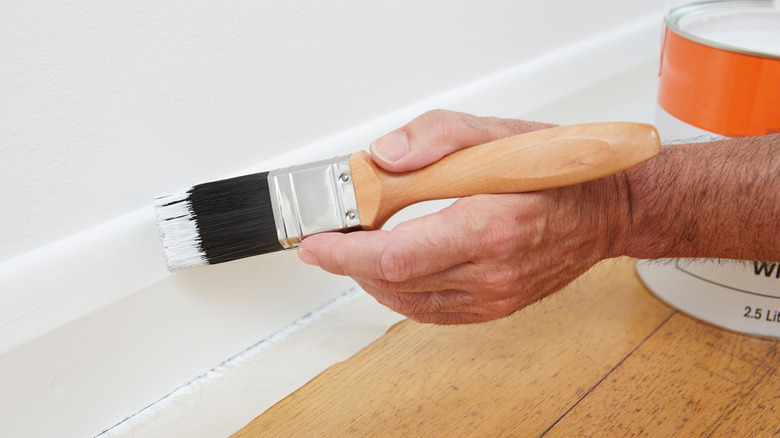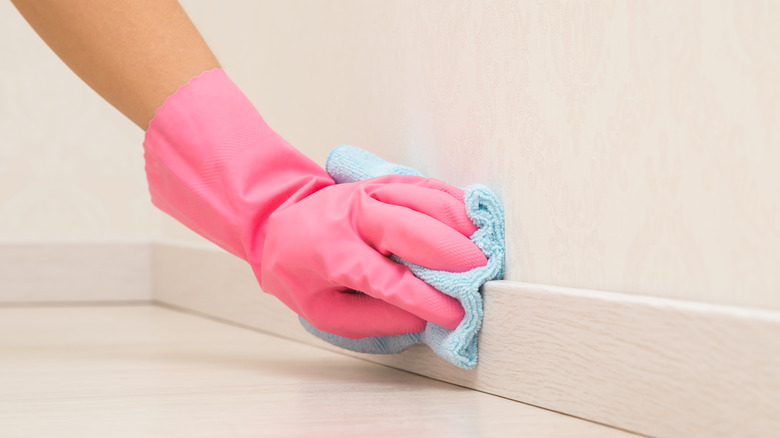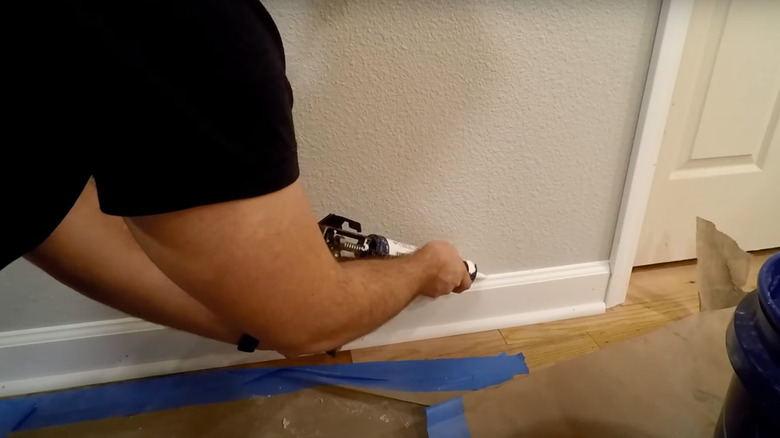Why You'll Want A Tube Of Caulk On Hand When Painting Baseboards
If you're interested in painting your baseboards like a pro, you'll want to have a tube of caulk handy for your next DIY project. You can quickly fill in any gaps or holes before painting, giving your baseboards a seamless finish. However, you'll need to consider the caulk's drying time before painting, but caulk in a well-ventilated area may dry in as little as a half hour.
Caulk is perfect for baseboards because you can control how much or how little you apply, and the applicator makes it easy to seal tight corners. When using spackle and a putty knife, you're more restricted with the areas you can fill in, but a caulk gun can offer a tiny dollop for small holes or a long strip of sealant across the back of your baseboard. The possibilities are endless, so grab your caulk, some paper towels, and get ready to redo your baseboards with this incredible hack.
Prepare your baseboards
Whether you're redoing existing baseboards or installing new ones, you'll be happy to learn that you can easily use a caulking gun for flawless baseboards. As you install your baseboards, you'll have tiny nail holes that need covering. You can quickly conceal these openings with a touch of caulk. You may also have chips along your baseboards from sneakers, pets, or your vacuum. Instead of replacing your baseboards, caulk can smooth away rough edges in no time.
To start your project, choose your caulk. Some brands are paintable, and others aren't, so always read the label. Once you select your caulk and insert it in your caulk gun, it's best to cut your applicator on an angle. This helps with accuracy. You'll also want to choose the color caulk that best matches your paint. Next, wet a few paper towels and place them in a bowl. Before caulking, you'll want to clean your baseboards. Remove any dust, dirt, or pet hair. After you clean your baseboards, you're ready to apply your caulk.
Apply your caulk
Most people opt to apply caulk before painting. This gives them the cleanest look possible. Run your tube of caulk over the back of your clean baseboard, closing any gaps between the wood and your walls. Use your wet paper towels to moisten the tip of your finger so the caulk doesn't stick to your skin. Then use your finger to smooth out the caulk.
Look for any imperfections in your baseboard. Use the caulk to close these gaps, holes, or divots. Caulk and putty are similar in that certain materials can be sanded once dried. Unfortunately, you can't sand silicone caulk, so be sure to thoroughly smooth it with your finger before it dries. The best part about caulk is you can use it to correct any imperfections in your baseboards, even after you paint. As long as the caulk and paint are the same color, you can easily fill in a nail hole or a dent in the wood.


